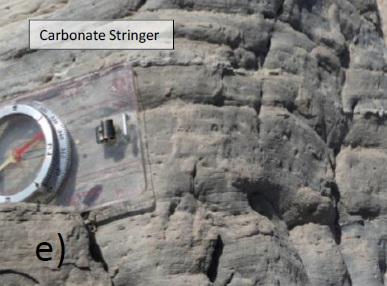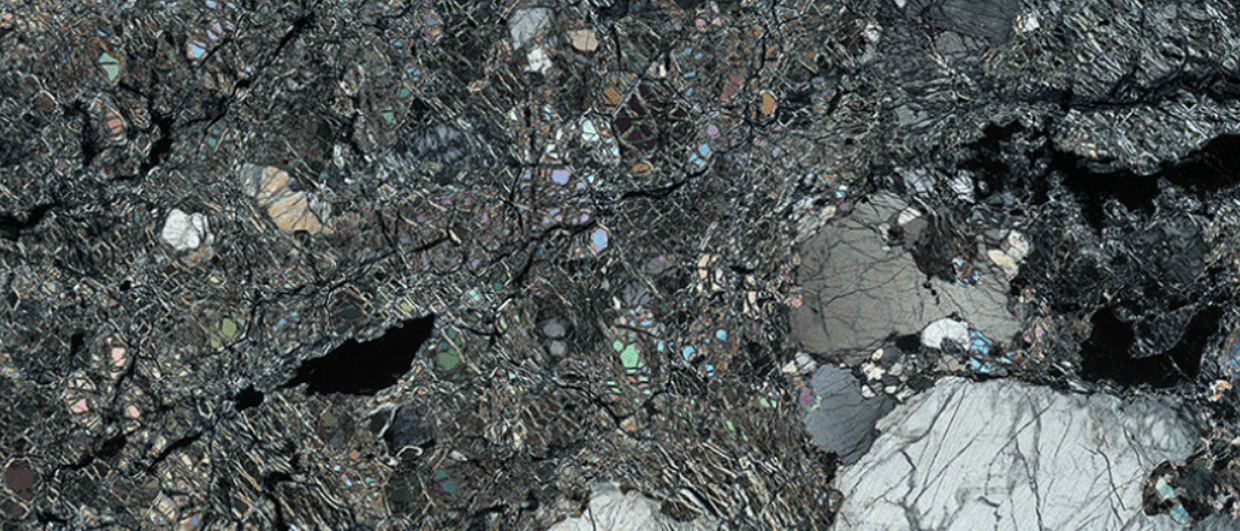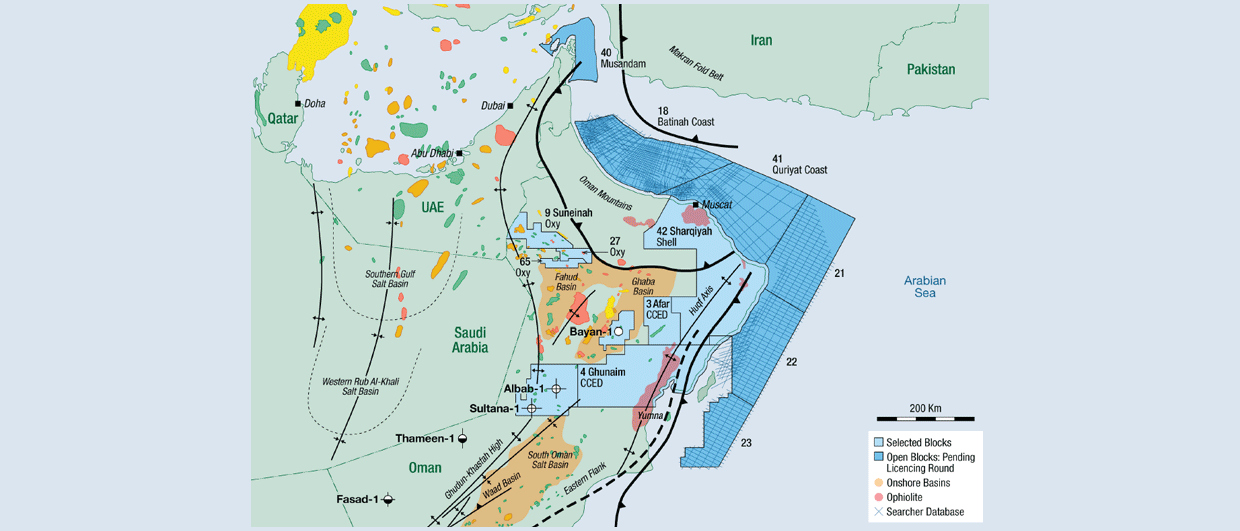The salt exposed here consists of halites of the Ara Salt, which was deposited around 540 million years ago during the earliest Cambrian. The core of the dome, where the halites are found, can be seen on the right-hand side of the photo.

Despite the arid conditions, the salt at surface suffers from dissolution. The remnant residual strata (above the cars) consist of rafted carbonate stringers and black organic-rich shales, where good visible pinpoint porosity is present in the former, especially in wavy-bedded dolostones.
The carbonate stringers (see below) are considered to be rafted into the salt basins from surrounding platform areas, which is particularly evident from subsurface interpretation. The early discoveries of oil in Oman reservoired in these carbonate rafts within the salt must have come as a bit of a surprise when drilling through them.
With improved seismic interpretation techniques and in particular 3D acquisition and processing, the identification of stringers became easier over time. On seismic, the high amplitude stringers give the appearance of a string of sausages encased in the more amorphous Ara Salt.
A longer article describing the (petroleum) geology of Southern Oman will appear on our website soon.






